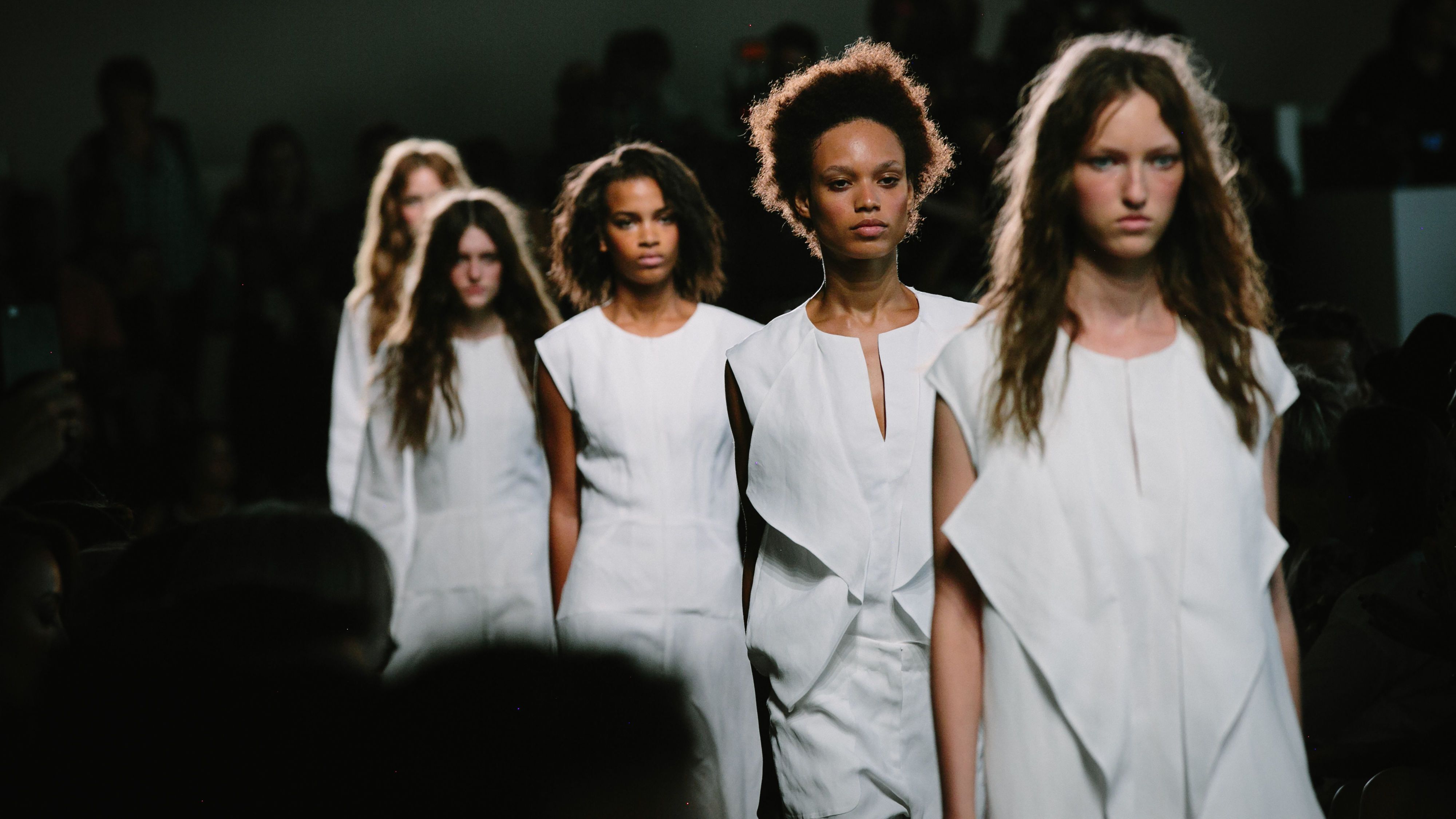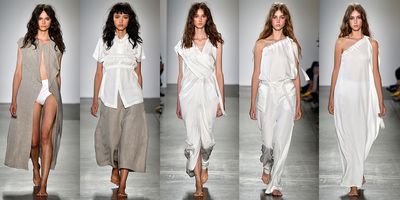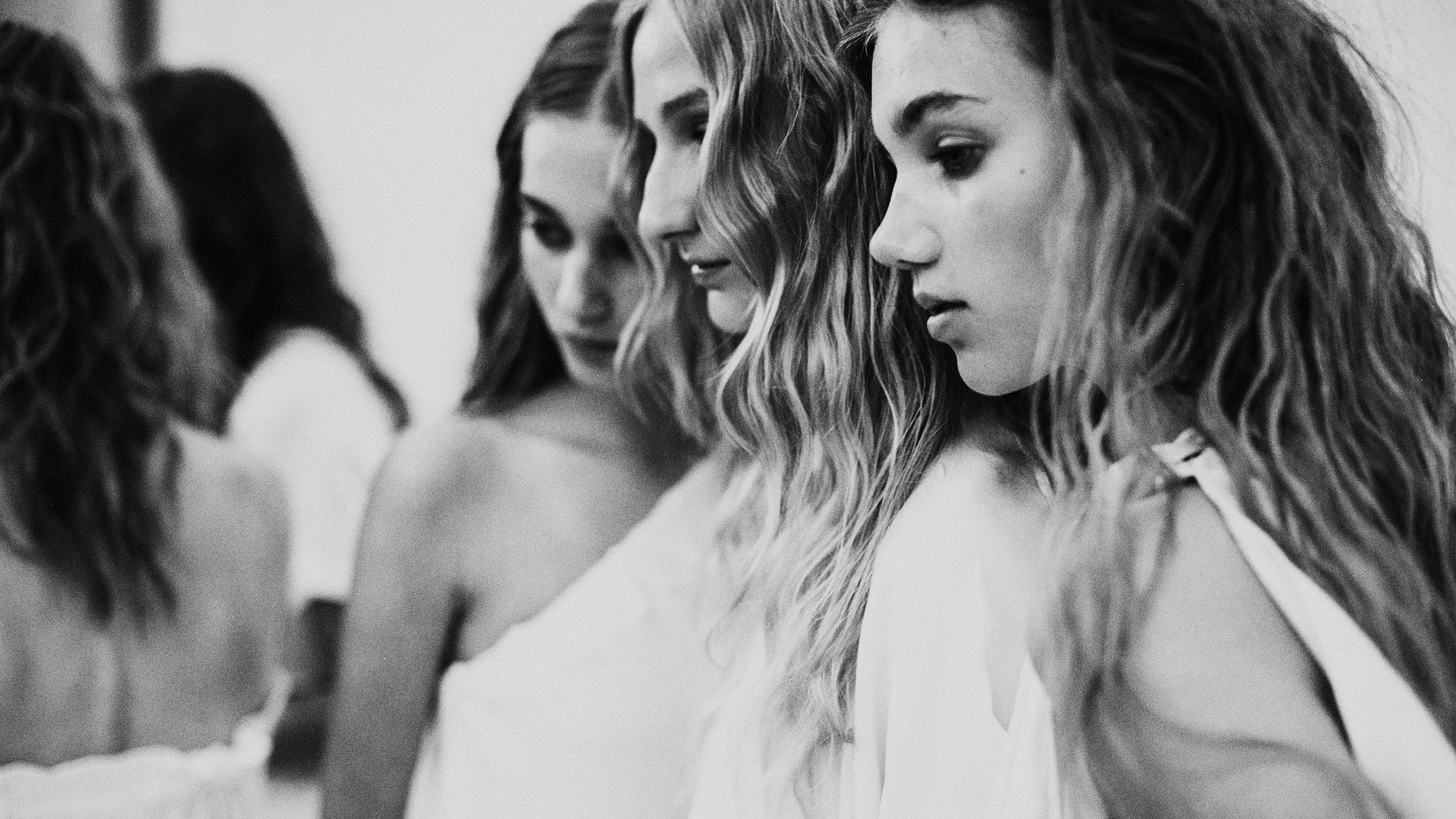Designer Maria Cornejo Talks Fashion's Effect on the Environment—and How the Way You Shop Can Help
In honor of Earth Day on April 22, longtime sustainability advocate Maria Cornejo reflects on her own path and the one she's charting forward.


Maria Cornejo started her label in 1998 with an eye on the environment, using scraps she bought from big companies to cut down on waste. With a spring 2017 collection made of wood pulp from renewable forests, she's leading the fashion industry charge toward a sustainable future. In honor of Earth Day (April 22—mark your calendars!) we sat down with the designer to reflect on her own path and the one she's charting forward.
Marie Claire: How much waste is going on in the industry today?
Maria Cornejo: You just have to see the piles of clothes—the seasons, the crazy calendars, there's so much that doesn't even get used. Things get overproduced because in order to set the right pricing they have to set a minimum, and then they get thrown out into big sales everywhere. Before I started my company in 1998, I worked for big companies traveling a lot and saw firsthand how much waste there was. I was flying across the world in first class to places like Italy or Hong Kong where I was staying in 5-star hotels, only to nickel and dime someone over a sweater price. It made no sense to me. Because America doesn't have a strong textile industry anymore, we have to bring things like fabrics, zippers, and color tape into the U.S., and having so many elements involved in production adds to the amount of waste. You might have some things coming from Italy, a button coming from China, or lining coming from Korea; it's just endless. On top of that, things like the dye or zippers might be toxic, and with globalization, you might be buying something you think was made in Italy with locally sourced fabrics, but in reality you can't know where they're actually coming from.
"Just because you like clothes doesn't mean that you have to throw your principles out the window."
Marie Claire: Why did you decide to launch your own brand?
MC: I wanted to start something in New York that focused on making products locally, and because I'd just had my second child didn't want to be traveling halfway across the world anymore. Originally, I wanted to open up a gallery space and sell things like cushions or blankets that didn't have a season, and have friends or artists contribute. But it ended up being about what I could make and put in the store. Everything was made in the back—we would put up a rack of clothes and basically make things to order. I would buy less fabric and recycle things. I began with four geometric shapes—circles, triangles, squares, and rectangles—and thought about what those shapes can do on the body. The idea was to have something wearable that fit with my reality, which was being a mom with two young kids and not always wanting to wear jeans. I still wanted to wear interesting clothes, and the options out there I found were either very expensive or very cheap. There was a big gap in the middle.
Marie Claire: Have you always been so environmentally conscious?
MC: I've always been very aware of it. When I was a kid I wanted to be a marine biologist until I realized I hated being underwater. I think a lot of that came from traveling and seeing the levels of waste produced by so many factories around the world. It became very important for me to stand up and design with a conscience, you know? Just because you like clothes doesn't mean that you have to throw your principles out the window.
Get exclusive access to fashion and beauty trends, hot-off-the-press celebrity news, and more.

Zero + Maria Cornejo\'s spring 2017 runway show'
Marie Claire: The word sustainability is thrown around a lot. What does sustainable fashion really mean?
MC: I think it's trying to do the right things on the fabric, social impact, toxicity, and environmental levels. It all starts with the fabric, but it goes the beyond that. If you are making something correctly but then shipping it to three different places before you deliver it, it doesn't make any sense.
Marie Claire: What do you do differently than other designers to be more sustainable?
MC: We use fabric that's responsibly sourced from forests in Sweden from trees that are reforested so then they avoid deforestation. We use a recycled cashmere as well—all the ends that would usually get thrown away when the yarn has been spent gets spun into new yarn with new life and another fiber to make it. We also use vegetable dyed leathers on some of our shoes. We're trying to do whatever we can. The goal is every season, to make one more aspect or section of the collection sustainable. Seventy percent of the collection is made in New York except for the knitwear, which is made in Bolivia with local yarns and uses organic bio-tape and a plastic recycled tape. We work with a vertical women's factory there and in Peru. All of these indigenous women are knitting there with their children, to help support them. They make the yarn and also do the knitting, so it's about keeping things local whenever possible. We are also working with a company in Italy that prints with less water. And there's air printing, which just means the dyes get sprayed on with less water.

'Some of our favorite looks from Zero + Maria Cornejo\'s spring 2017
Marie Claire: Can you talk about the inspiration behind your spring collection?
MC: We used a viscose drape that's made from wood pulp. You can also make very sustainable fabric out of bamboo. The yarn lessens water consumption and is sourced out of the same forest in Sweden that stops deforestation. We decided to keep the collection white because I wanted people to see the fabrics for what they were instead of changing them too much. The collection also existed in colors, which we have in the showroom, but we decided just to show it in white on the runway. I felt it was important to show them in their purest state. It was also an interesting idea because the collection was inspired by New Orleans. The city is a very colorful, multicultural place—but think about how it is when you take all the colors away. I thought the collection was successful because the soul of it remained. You could feel it in the clothes and the atmosphere, and the girls had no shoes and it was very free-spirited and natural.
Marie Claire: What are the challenges to being a sustainable designer?
MC: It's very limiting. There are times when I really love something and I'm like, "No! Where did it come from? How many countries did it have to go to?" You know what I mean? There are fabrics in the collection that are richer, but they aren't sustainable yet. That's something I want to work to change. It's also challenging because we're selling in stores where we are hanging next to designer collections that aren't necessarily sustainable, or they don't have the same kind of restrictions that we're imposing on ourselves. We have to get creative.

Many of Cornejo\'s shoes are vegetable-dyed.
Marie Claire: Do you think its important to educate people?
MC: Yes, and to do that, we tell them our story. We have special tags that are signed by the people who made the garment and tell the story about the fabric or the way it's made. Because you want to know who made your clothes, and to know someone is trying to make sure they're giving you the best. When they sign the piece of clothing it's like somebody cooking for you; they put their heart and soul into it. When people wear our Bolivian knits and see who knitted them, they are excited because they know they are supporting this women's cause in Bolivia. And it shows you that we are all connected. It's not a machine making your clothes in a black hole somewhere. There is a human being behind it, and a community there.
"People aren't buying blindly anymore, they want transparency. They want to know informed about where their clothes were made."
Marie Claire: Do you feel people are starting to care more about sustainability and where their clothes are coming from?
MC: Definitely. People aren't buying blindly anymore, they want transparency. They want to know informed about where their clothes were made. I think that's why we have a loyal clientele. This March, we had 68 degree weather one day in New York. I was just in Chile and the ozone hole there is enormous. They're paying for it with all of this flooding, and America is basically responsible for that. You can see the cause and effect. I always use a really simple analogy: if you're putting organic food on your table because you care about eating well, shouldn't you be trying to do the same with what you're putting on your body? Our skin is our biggest organ. Everyday you are absorbing things through it. The way that a cream without the right ingredients can affect you, everything you put on your skin matters.

'Models backstage at the Zero + Maria Cornejo spring 2017 runway show.'
Marie Claire: How much fabric out there is toxic?
MC: I think there's a lot. If the dye isn't toxic, the process they use, the waste that comes from it, might flow into a river that then makes it toxic. There are a lot of toxic metals in the dyes that aren't listed anywhere when you're buying something. There are so many things that can happen, and you have no idea when you're buying a garment all the negative effects that may have happened in order to make it. There are social and environmental impacts. You might be working with a factory that underpays its staff or mistreats its workers, or mishandles the dyes. I think that conscious fashion, fashion for our soul, needs to keep pushing that needle towards being better and more mindful.
Marie Claire: If you could change one thing about the industry today what would it be?
MC: It would be great if everybody got a conscience. If we started to take more responsibility for the pollution in the world caused by the fashion industry, and to produce less, but better-thought-out goods. Then it becomes worth saving up to buy something beautifully-designed because you can and will keep it, rather than buying a bunch of disposable fashion items you'll probably wear once before throwing away and adding to the waste stockpile. I do think people used to buy clothing with a more thoughtful approach. They weren't just buying things because they were cheap, they saved up for special things they really wanted. The incentive I think comes from asking the question: what makes economic sense? If you're making hundreds and hundreds of samples and discarding half of them, just thread it down to a collection that's more thoughtful from the beginning.
Marie Claire: What's the secret to implementing change?
MC: There's strength in numbers. One designer isn't going to change everything. Everyone has to demand that their materials are being sustainably sourced. Just like how cosmetic companies won't test on animals, there have to be benchmarks that we can all adopt. The knowledge also creates the demand. The more people know about it, the more people will be interested and demand for things to be produced in a careful, conscious way. We can't start with big thinking, we have to approach it little by little. Rome wasn't built in a day. Sustainability isn't going to become big right away. Each day you give yourself a little bit more responsibility. It's not ideal, but that's the only way things change, we can't just keep ignoring it. Maybe you'll have a conversation with somebody else and make them think or question something what they're buying or putting on their bodies. Otherwise it's overwhelming, the expectations feel unreal, and you won't end up doing anything. As with everything in life, you have to learn to walk before you can run. I think especially women tend to put unrealistic expectations on ourselves.

'Models went barefoot on the runway'
Marie Claire: How do you celebrate Earth Day?
MC: For us, every day is Earth Day. It's like with Women's Day recently, I said, "Every day is women's day—we're women!" It's something that we sort of take for granted. But we are planning something to launch on social media, and last month we launched our eco-drape fabric online and started telling people the story of it. I think information is key and at the end of the day it doesn't matter if it's sustainable or not to a consumer, most of the time, they just want to know that it's beautiful. So we have to serve those people with desirability and conscientiousness at the same time, it's a challenge.
"I want women to feel good when they're wearing my clothes—not just because they're beautiful, but because the process and every step involved in making them is incredibly thoughtful."
Marie Claire: In general, what's your design philosophy?
MC: I don't follow trends—it's more of an instinct thing. Honestly, I'm kind of my own worst client. I wake up and go, "I have nothing to wear!" But that's what makes it interesting. I ask, what would make me feel good? I think it's a constant challenge because clothes are so personal. For me, my clothes are related to my mood. If I feel like I'm not wearing the right thing, I don't feel confident. I think it's in everybody's psyche. If you feel good about your clothes, you get excited. And I want women to feel good when they're wearing my clothes—not just because they're beautiful, but because the process and every step involved in making them is incredibly thoughtful. You can be proud wearing them.
We're nominated for a Webby Award—but we need your vote to win! Vote for the Women and Guns project here.
